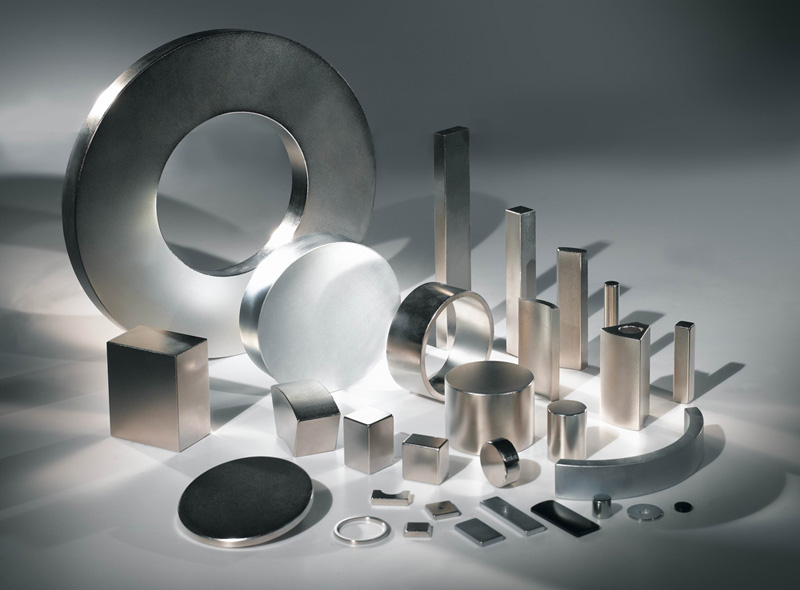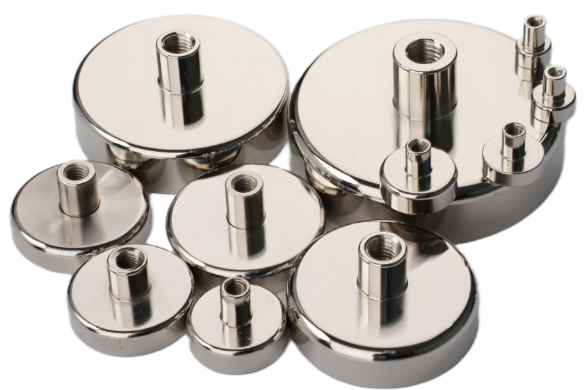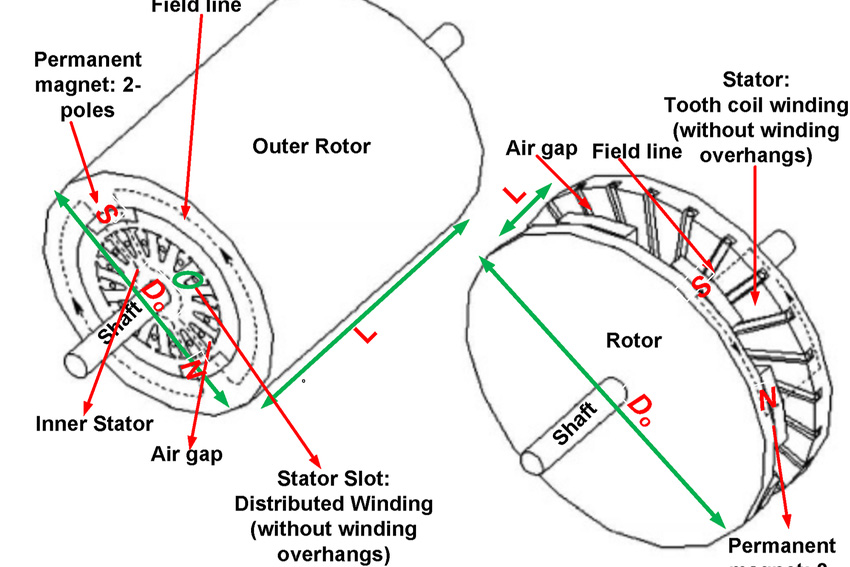Permanent Magnets Types, Pros & Cons
At present, commonly used permanent magnets are ferrite magnets, neodymium magnets, SmCo magnets, AlNiCo magnets, rubber magnets, and so on. Each type of the above magnets has its properties, and their pros & cons are also different. So in this article, let's take a deeper look at the permanent magnet types, pros & cons.
 Permanent Magnets Types, Pros & Cons
Permanent Magnets Types, Pros & Cons
1. Ferrite Magnet
Ferrite magnets are a non-metallic magnetic material, also known as magnetic ceramics. They have a wide range of applications. Ferrite magnets do not have high magnetic properties. Typically, the magnetic energy product (one of the parameters to measure the performance of magnets) can only be slightly higher than 4MGOe.
Pros of Ferrite Magnets
The biggest advantage of this kind of magnet is its low price. At present, they are still widely used in many fields. For example, the horn magnet in the traditional radio is made of ferrite magnets. Besides, since ferrite magnets are made of ceramic material, there are few corrosion problems. The finished products do not need surface treatment such as electroplating or coating.
Cons of Ferrite Magnets
Ferrite magnets are generally formed by molds and then sintered. Therefore, it is difficult to machine ferrite magnets. So most ferrite products have simple shapes and large dimensional tolerances.
2. Rubber Magnet
Rubber magnet is one of the series of ferrite magnetic materials. It is a flexible, elastic, and twistable magnet made by bonding ferrite magnetic powder and synthetic rubber and extruding, calendering, injection molding, and other processes. Generally, its magnetic energy product is 0.60~1.50 MGOe. Rubber magnets can be processed into strips, rolls, sheets, blocks, rings, and other various complex shapes.
Applications of Rubber Magnets
Rubber magnets are mainly used in refrigerators, teaching instruments, switches, sensor magnets, micro motors, disinfection cabinets, kitchen cabinets, toys, stationery, advertising, and other industries.
3. SmCo Magnet
The main components of SmCo magnets are samarium and cobalt. Since the above two materials are expensive, SmCo magnets are one of the most expensive magnets available on the market today.
Pros of SmCo Magnets
The magnetic energy product of SmCo magnets can reach 30MGOe, or even higher. In addition, the SmCo magnet has a high coercive force and high-temperature resistance and can be applied to a high temperature of 350 degrees Celsius, so it cannot be replaced in many applications. Besides, since SmCo magnets have electrical conductivity, they can be processed by wire cutting. Moreover, SmCo magnets have good corrosion resistance and generally do not require anti-corrosion plating or painting.
Cons of SmCo Magnets
The SmCo magnet is very brittle, so it is difficult to process small-sized or thin-walled products.
4. Neodymium Magnet
Due to their excellent magnetic properties and ease of processing, relatively low price, neodymium magnets, or NdFeB magnets are currently widely used and rapidly-developing magnet products.
Pros of Neodymium Magnets
The magnetic energy product of NdFeB magnets can reach 50MGOe, which is 10 times that of ferrite magnets. Due to the excellent magnetic properties of neodymium magnets, on many occasions, they are used to replace other magnetic materials to reduce product volume. In addition, just like SmCo magnets, NdFeB magnets also have good processing performance. Therefore, the dimensional tolerance of NdFeB products is much better than that of the ferrite products. Generally, the dimensional tolerance of general NdFeB products can be (+/-) 0.05mm.
Cons of Neodymium Magnets
The maximum operating temperature of NdFeB magnets is around 180 degrees Celsius. If in a harsh environment, it is generally recommended that the maximum operating temperature of NdFeB magnets does not exceed 140 degrees Celsius. In addition, neodymium magnets are easily corroded. Therefore, most NdFeB products need to be plated or painted. Commonly used surface treatments include nickel plating (nickel-copper nickel), zinc plating, aluminum plating, electrophoresis, etc. If they work in a closed environment, phosphating can also be used.
5. AlNiCo Magnet
AlNiCo magnet is an alloy composed of metals aluminum, nickel, cobalt, iron, and other trace metal elements, and its magnetic energy product can reach 9MGOe. AlNiCo magnets are widely used in the field of sensors.
Pros of AlNiCo Magnets
The biggest pro of AlNiCo magnets is their high-temperature resistance, and their working temperature can reach 550 degrees Celsius.
Cons of AlNiCo Magnets
AlNiCo magnets are very easy to demagnetize under the reverse magnetic field. If you force the same pole direction (two N or two S) of two Alnico magnets together, the magnetic field of one of the magnets will be reversed or reversed. Therefore, they are not suitable to work under the reverse magnetic field (such as a motor).
Conclusion
Thank you for reading our article and we hope it can help you to have a better understanding of the permanent magnet types, pros & cons. If you want to know more about permanent magnets, we would like to recommend you visit Stanford Magnets for more information. Stanford Magnets is a leading magnet supplier across the world, that has been involved in R&D, manufacturing, and sales of strong magnets and ferrite magnets since the 1990s. It provides customers with high-quality rare earth permanent magnetic products such as neodymium magnets, SmCo magnets, AlNiCo magnets, and other non-rare earth permanent magnets at a very competitive price.















